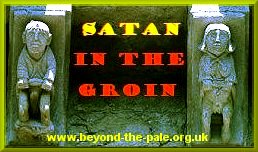Brioude (Haute-Loire)
It is possible that this capital in the basilica of Saint-Julien represents
the moments before the decapitation of St Julian,
a fourth-century saint (probably legendary) who was allegedly pursued by the
soldiers
of a certain Crispinus, commander of a garrison, had his head cut off at this
'pagan' cult-centre of Brioude,
and his head carried to the important Roman administrative centre of Vienne.
However, his nakedness and large penis are not explained by the legend,
and the soldiers carry lances and shields, not short swords or battle-axes
suitable for decapitation. One of the soldiers appears to be grasping him
by the beard.
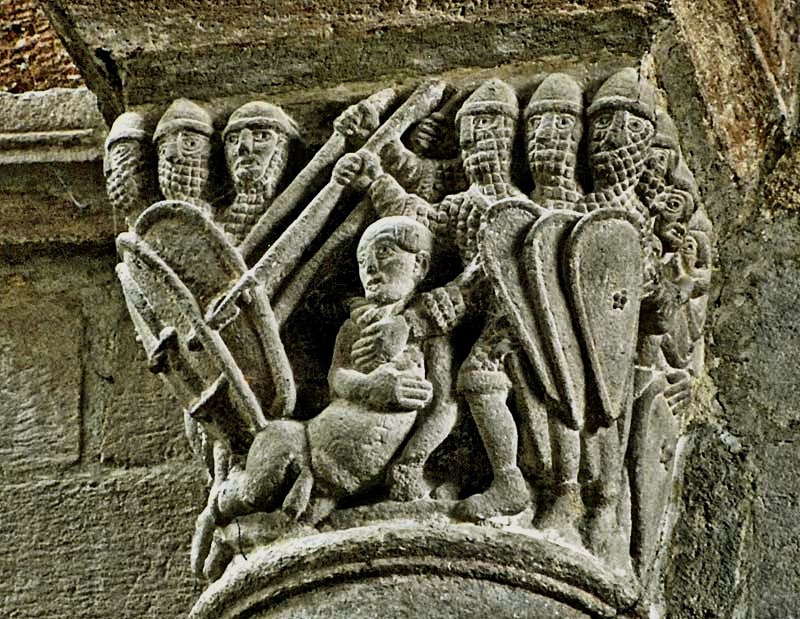
photo © Adrian Fletcher, www.paradoxplace.com
The legend of St Julian shows that there was considerable anxiety in Romanesque
times
about the continuation of 'pagan' practices in the more remote areas. It should
be remembered that the word 'pagan'
from Latin paganus became the word paysan in France - a term of abuse even
today.
It should also be remembered that Christianity is the most intolerant of all
religions,
and that people (like St Julian) who went around destroying shrines and desecrating
holy places
were declared saints and martyrs.
Alas, there are no pagan martyrs: some of the figures depicted at Brioude my be almost the only record.
Here is a semi-exhibitionist 'pagan' sheep-farmer straddling a severed
head.
He is also sticking out his tongue, a common metaphor of sinfulness.
Is this a slander on rural life ?
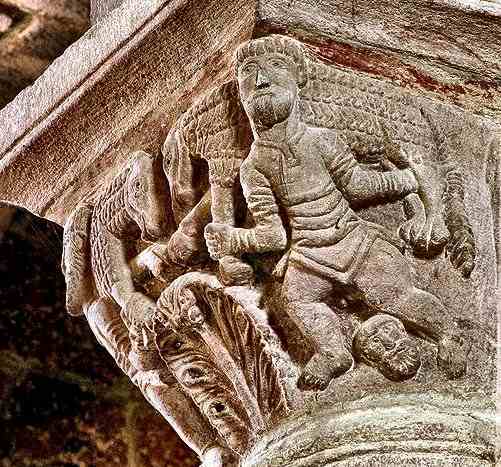
photo © Emmanuel
Pierre
Another sheep-carrying pagan, also (apparently) exhibitionist.
Commentators have linked this motif with the Greek Hermes Criophoros
(ram-carrier),
but while the iconographic origin probably goes back to the Roman
period
the depiction here is surely not that of Hermes/Mercury as god of flocks,
nor of The Good Shepherd.
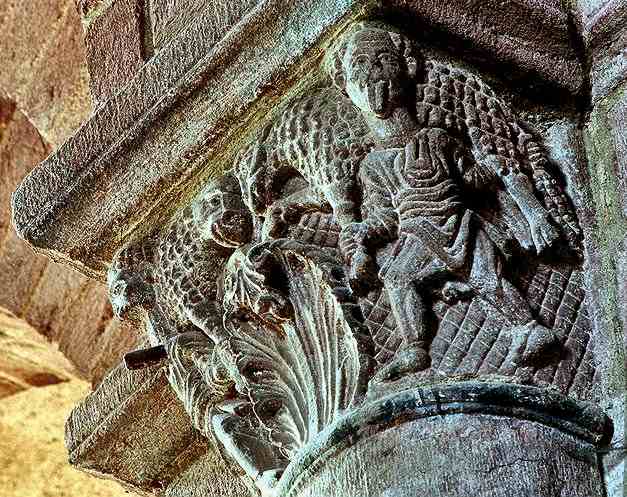
photo © Emmanuel
Pierre
But these tongue-stickers, flanking another naked, winged figure with mouth
agape, are winged acrobats.
(I cannot interpret the inscription.)
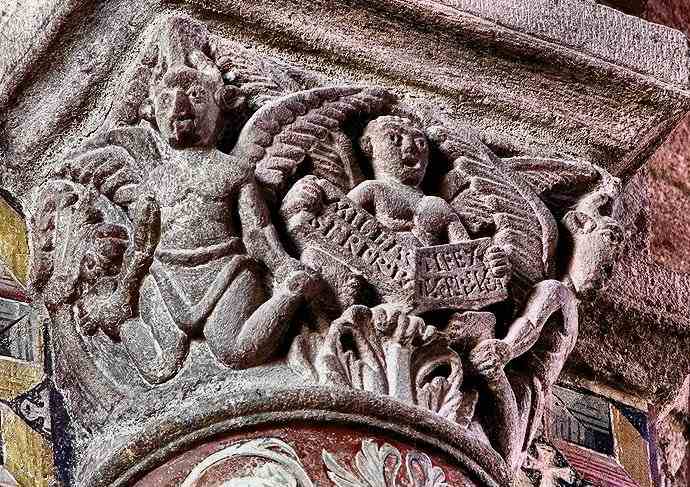
photo © Emmanuel
Pierre
These figures, on two sides of the same capital are easily interpreted:
the male exhibitionist with snakes represents Concupiscentia.
The figure in between is having his moustaches pulled by the exhibitionists.
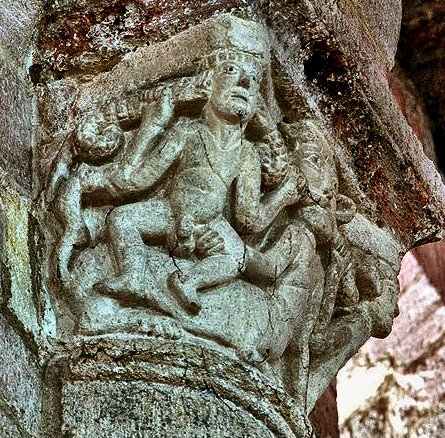
photos © Emmanuel Pierre
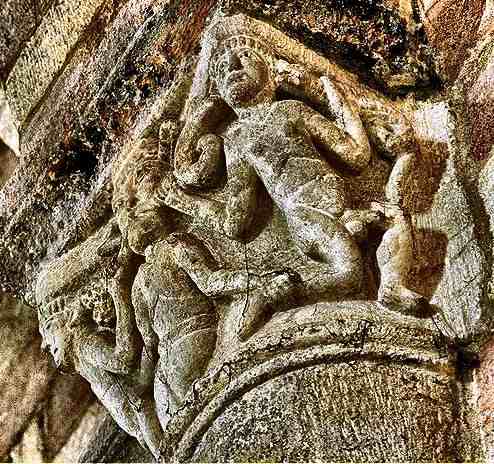
This is a good example of a moustachioed mouth-puller (also a sin-motif)
on an external keystone.
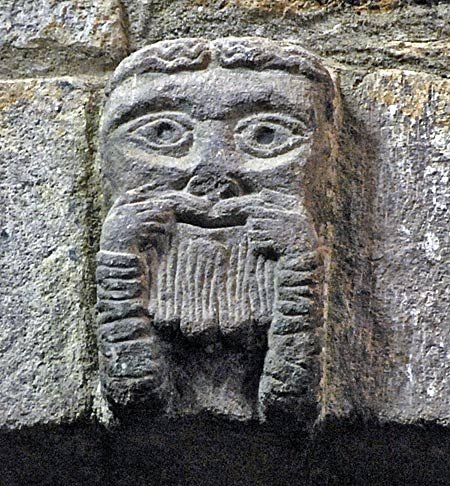
photo ©
Adrian Fletcher, www.paradoxplace.com
Although from this angle this scene might be interpreted as sodomy, one
of the most heinous sins,
it seems to me to represent Adam-as-peasant, with the tree and the serpent,
being grabbed by Satan.
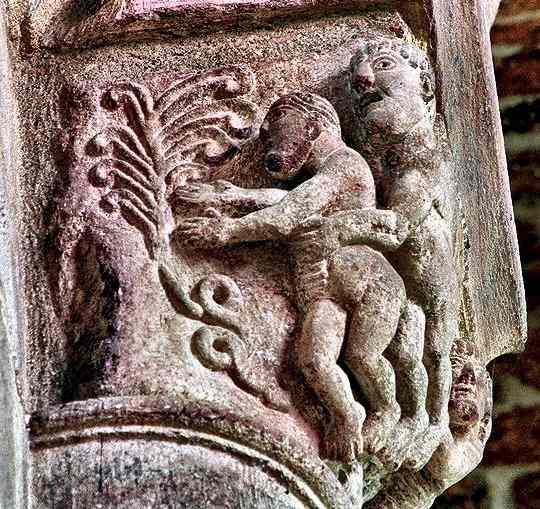
photo © Emmanuel
Pierre
A capital featuring beard-puller ?monks and ?monks blowing oliphants
or trumpets of doom to announce the presence of evil.
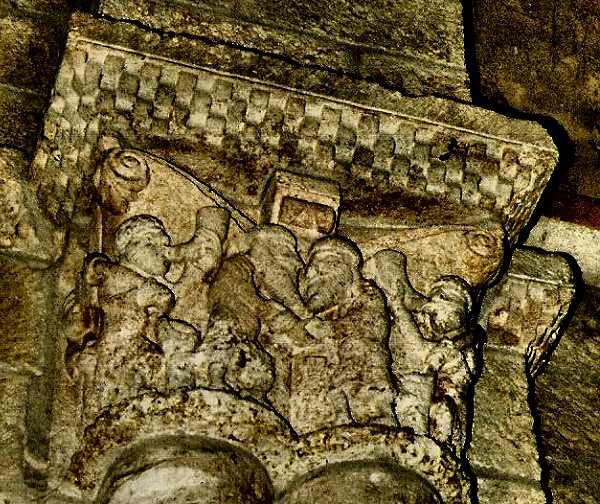
photo © Julianna
Lees
Compare with a capital at Passirac (Charente) depicting a concupiscent
male
being warned by similar trumpeters of doom.
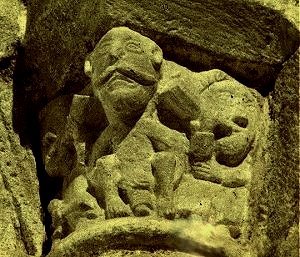
Amongst the gamut of Romanesque themes at Brioude are centaurs, mermaids,
centauresses with bow and arrow...
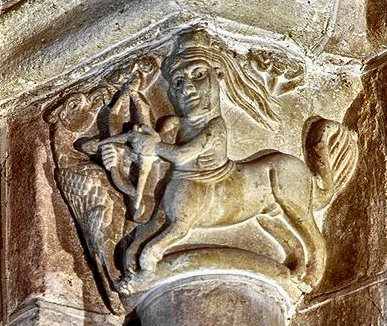
photo © Emmanuel
Pierre
...asses playing the
harp, rote
or lyre...
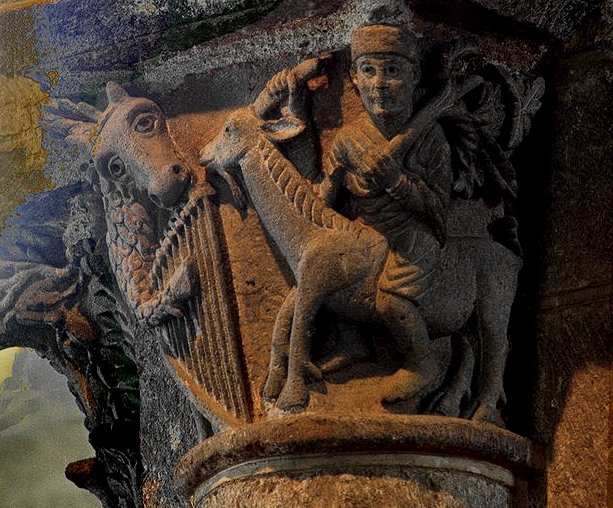
photo © Emmanuel
Pierre
...human harp
or rote players - or, arguably, Orpheus/Adam
flanked by monsters
(in this capital a rare Minotaur with two fighting crocodiles) -
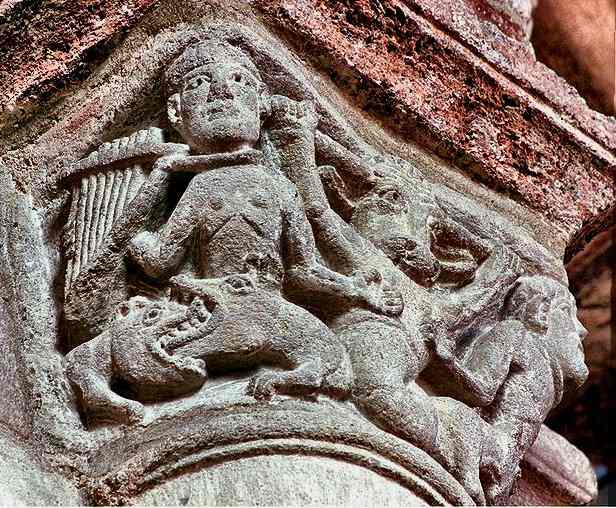
photo © Emmanuel
Pierre
...and acrobatic tritons or mermen (another rare motif representing unnatural
behaviour).
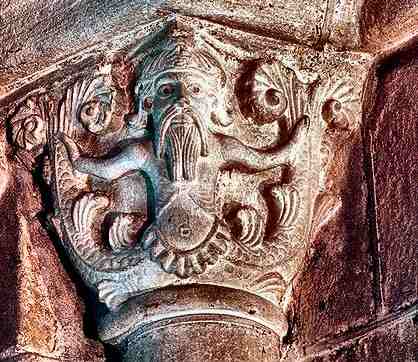
photo © Emmanuel
Pierre
Another merman/acrobat on an exterior capital.
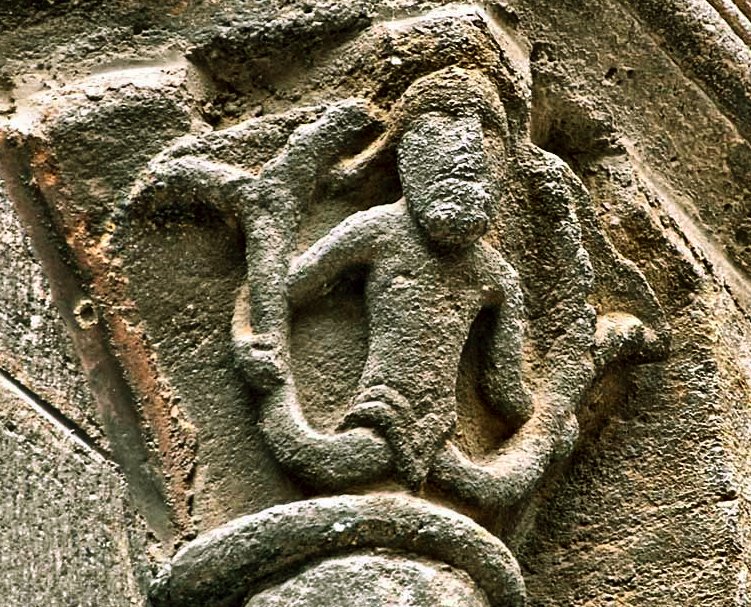
photo © Adrian
Fletcher, www.paradoxplace.com
Here is a naked ?ape
with a chain around his neck, as at Droiturier
(Allier) and other Auvergnat churches.
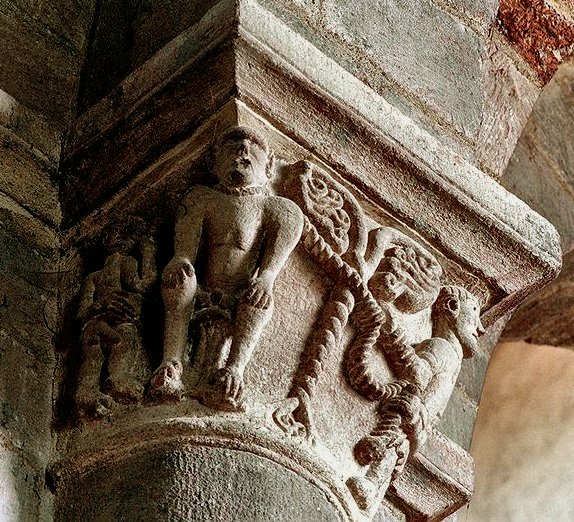
photo © Emmanuel
Pierre
And finally, to raise the tone, here is one of the many Biblical scenes
beautifully interpreted by master-sculptors,
still retaining its original polychrome.
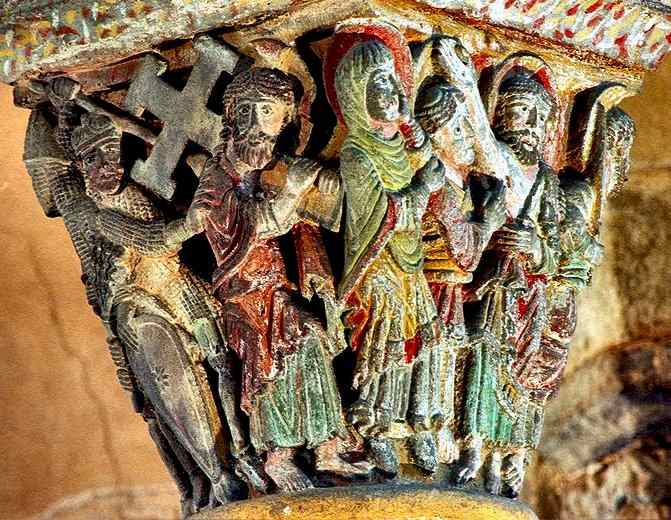
photo © Emmanuel
Pierre
